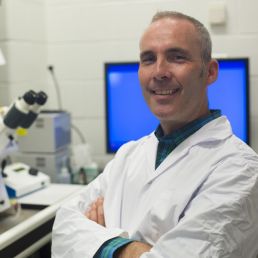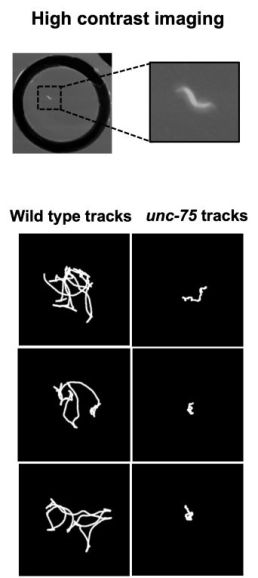Leading Canadian Research in Sleep Science with CSS President-Elect John Peever
‘Not until the past decade did sleep take centre stage in our understanding of general health and well-being,’ says sleep scientist Professor John Peever. ‘Now, with an increasing awareness of how sleep is pivotal in guiding healthy lifestyle choices, we are starting to develop a more holistic idea of what sleep health looks like.’
Peever is President-Elect of the Canadian Sleep Society (CSS), a national organization that aims to improve sleep for Canadians through driving sleep research, enhancing clinical care, and educating the public. Beyond Peever’s research, he is also a strong advocate for raising Canadians’ awareness of sleep science through public health campaigns.
‘Sleep is just as important as diet and exercise, only easier – that is the message I aim to put out’, asserts Peever. “I am really looking forward to working with my colleagues in Canada as well as on an international scale with other national sleep societies.” Peever is proud that major strides in insomnia and sleep apnea research have been taken by Canadian scientists.
As a leader, Peever views his first responsibility to be listening to the ideas of his trainees and then making decisions for his laboratory to bring their ideas to fruition. He hopes to bring out the best in his trainees and is deeply grateful for their hard work. As President, he plans to take the input of the sleep research community and implement the vision that comes out of their views.
Peever will ensure a broad spectrum of voices are present on the CSS board of directors by increasing gender, racial, geographic, and age diversity. To support Canada’s next generation of sleep scientists, Peever particularly solicits input from younger scientists. CSS currently has two PhD students on the board of directors and hosts a bi-annual conference with events that recognize trainee research.
Prof Peever’s laboratory in Toronto investigates how disruptions in sleep contribute to neurological disorders. Using a combination of cutting-edge neuroscience tools such as optogenetics and chemogenetics, the Peever lab aims to elucidate the brain circuits involved in sleep. Peever takes a special interest in REM sleep in relation to narcolepsy and Parkinson’s disease.
Their probes into the neural mechanisms of sleep are often guided by clinical observations. “We take clinical observations of sleep disorder symptoms and test them at the experimental level”, says Peever. “For instance, what would happen if we manipulated a brain area that clinicians found to be associated with narcolepsy?”
Narcolepsy is a sleep disorder where the brain struggles to regulate normal sleep-wake cycles. A recent discovery from his lab manipulated the REM sleep circuit to show how a specific region of the brain is linked to symptoms of narcolepsy such as sleepiness.
Raised in the countryside, Peever is an avid beekeeper and horseman. As a child in his local library, he initially acquired his fascination with the brain. When he recently learned that his dairy farmer neighbour had a trove of data on cattle activity, Peever instigated a project to investigate any correlations between the sleeping patterns of cows and milk production.
In being elected as the President of the CSS, Peever reflects that he feels “humbled that a basic scientist has been given the confidence of not only guiding basic science, but also the clinical domains.” Peever’s understanding of the broad clinical picture and ability to connect it to basic science enhances his expertise in the wider field of sleep research.
Congratulations, Professor Peever, on your new role!
Prof John Calarco "excited and confident" after Canada Research Chair renewal for Neuronal RNA Biology
When the flow of information from gene to protein is disrupted, damage or disease can be the result. Prof John Calarco’s research in the Department of Cell & Systems Biology looks at how protein-coding exons in pre-mRNA are precisely chosen and spliced together, while introns in pre-mRNA are discarded.
“When mutations occur in sequences that are normally critical for splicing regulation, that’s when things can go awry”, says Calarco. “A big challenge in the field now is to understand how the regulatory code defines specific cellular states and how they are disrupted in disease.” Calarco’s Canada Research Chair funding has been renewed to allow him to focus on this process in neurons from the C. elegans worm.
Calarco was introduced to neuronal RNA biology as an undergraduate student at the Blencowe lab at UofT. He was intrigued that RNA regulation may differ in various cell and tissue types within a single organism. Using C. elegans allows observation of the behavior of these transparent millimeter-long worms in a whole organism context from a large pool of animals.
Initial funding from CRC granted him the flexibility to experiment with different techniques in his lab even to the extent of building his own equipment for high-contrast imaging. His group produced results that showed alternative splicing patterns in individual neurons and demonstrated functional consequences in animal physiology, neuronal development, and behavior.
By inserting RNA sequences coding for fluorescent proteins into alternatively spliced genes, they observed unique fluorescence patterns in individual tissues and brain cells. Genetic studies revealed that certain mutations in splicing repressor proteins would alter fluorescent signaling.
With these findings, Calarco’s lab can further explore the regulation of alternative splicing patterns and how malfunctioning regulation can result in disease. Calarco’s lab is currently investigating how different combinations of RNA binding proteins (RBPs) play a role in guiding tissue-specific pre-mRNA splicing. The image for this story shows that worms with mutations in the unc-75 RBP barely move across the field of view compared with wild type worms. UNC75 may repress splicing in neuronal tissue through interaction with splice sites.
Importantly, Dr. Calarco emphasizes the meaningful connections he has built with other labs and hospitals over the years. “Developing a network with the community will really reinforce the work that you’re doing,” he advises. “It allows you to continue asking interesting questions in the field and fosters collaboration.”
The Canada Research Chairs Program is a prestigious award that recognizes the work of world-renowned researchers and their teams at Canadian universities. With renewed funding, Calarco's lab will use computational analysis, genetic screening approaches, and microscopy to formulate a deeper understanding of how gene expression impacts nervous system function.
Calarco says “Acknowledgement that our current work is cutting edge in our field has made us excited and confident about the directions we’re moving in for the next five years.”
Congratulations, Professor Calarco!


